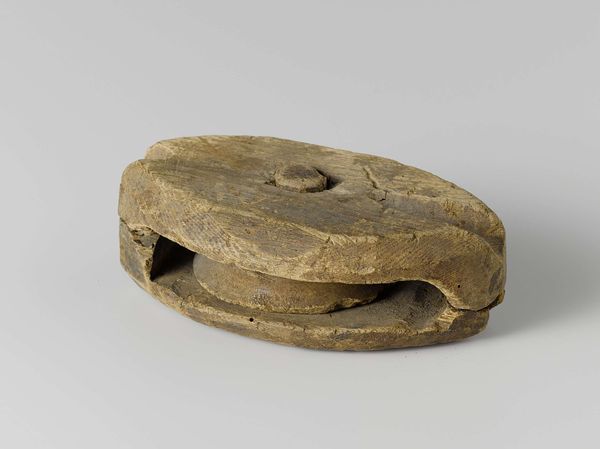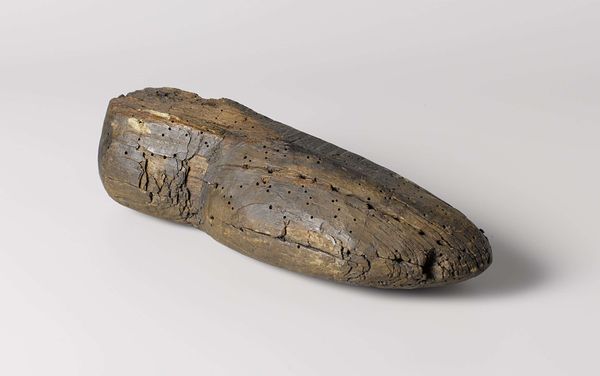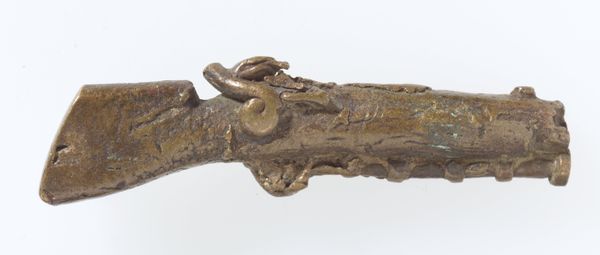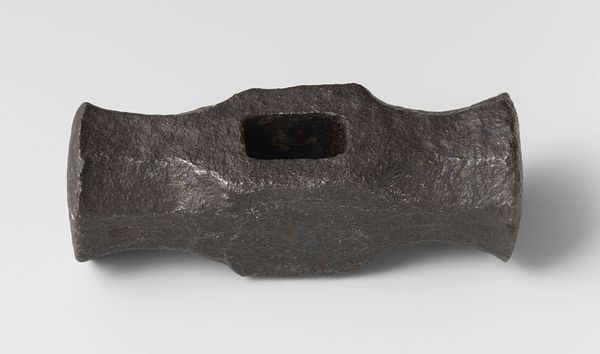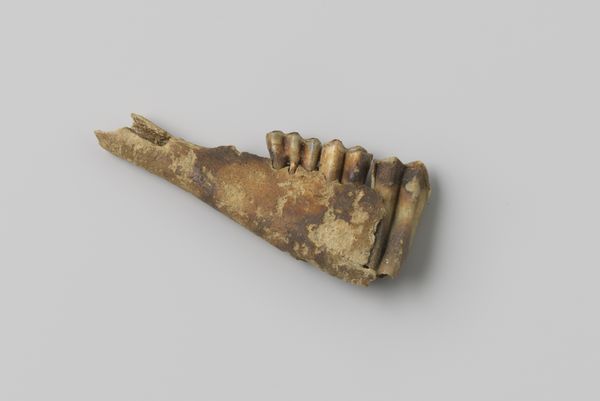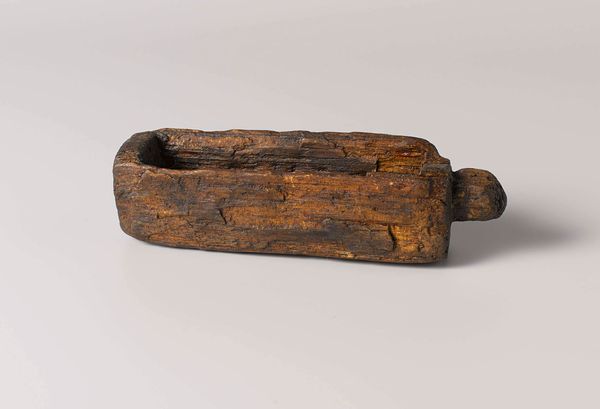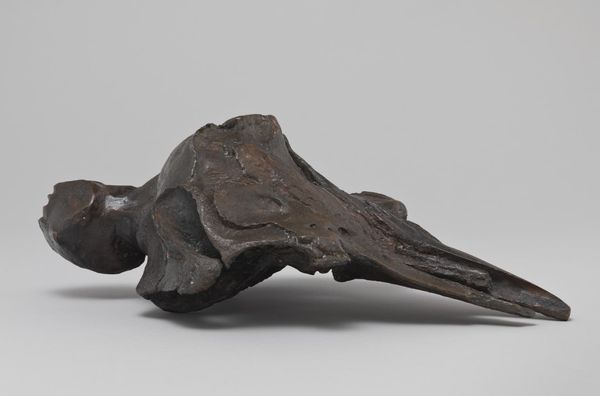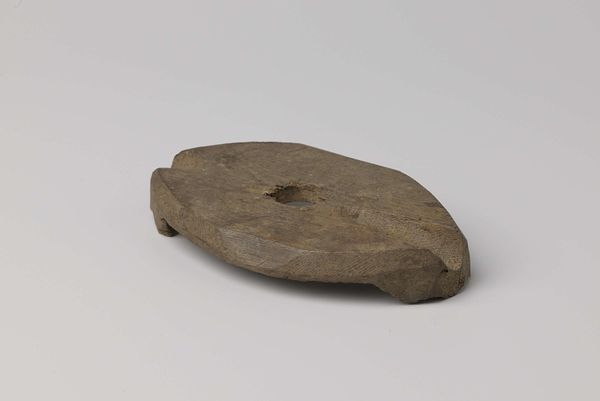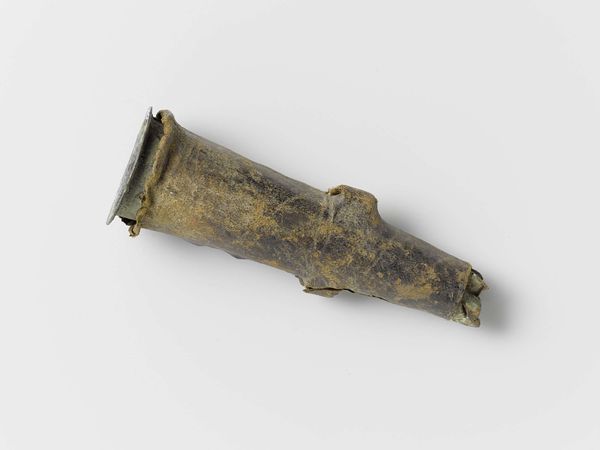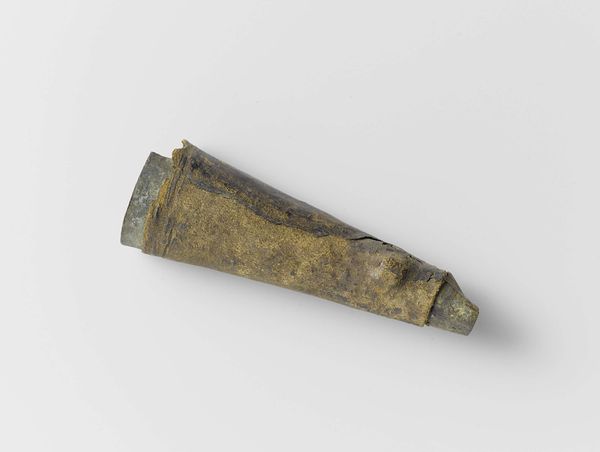
sculpture, wood
#
medieval
#
sculpture
#
form
#
geometric
#
sculpture
#
wood
Dimensions: width 18.2 cm, depth 5.6 cm, height 3.2 cm, width 1.4 cm
Copyright: Rijks Museum: Open Domain
Curator: This intriguing piece, crafted around 1590-1596 by an anonymous artist, is titled "Wervel." It’s currently housed here at the Rijksmuseum. The medium is wood sculpture. What are your initial thoughts? Editor: Well, my first impression is its raw materiality. You can really see the grain, the way the wood was worked. There’s something almost elemental about its form, even in its small scale. Curator: I find it compelling too. Thinking about the late 16th century, how would a work like this speak to the socio-political currents of its time? Editor: Considering that this object is "anonymous" the artist is already decentered from our perception. There's something deeply fascinating about understanding artistic production outside the cult of genius and thinking about the social nature of production as well as the materials at hand, such as this rich and gnarled piece of wood. The wear and tear tell their own story, perhaps an accidental by-product? Curator: I'm struck by the title, "Wervel"– a swirl or vortex. Given the context of the period, the form itself almost becomes a metaphor for a kind of resistance against centralized powers or ideas. Editor: The scale is also a factor. Its modest size implies a practical function, a tool perhaps or part of a larger structure. Looking at how the wood is fastened makes me want to trace its use. What stresses and forces was it designed to endure, and who handled it in the making process? Curator: These are important observations. The lack of ornate details encourages a different type of engagement, more physical and visceral. How do you see it influencing conversations about gender and labor? Editor: That is a fascinating thought experiment: where does the idea of art making fit into existing craft and artisanal industries? If the artist or artisan cannot be identified, this can free our assumptions to appreciate this object on different, yet still relevant and complex grounds, thinking about production and skill across classes. The gender question remains. Is there another, suppressed perspective that history neglects? Curator: Absolutely. The absence of traditional artistic attribution calls into question historical narratives about who gets to be an artist and whose work is considered culturally significant. Editor: Ultimately, what fascinates me most is the process. Someone chose this piece of wood, shaped it, gave it this form. The labor embedded in this act speaks volumes. Curator: Agreed, focusing on its journey and the conditions of its making really brings its story to life and reframes how we value it today.
Comments
No comments
Be the first to comment and join the conversation on the ultimate creative platform.
